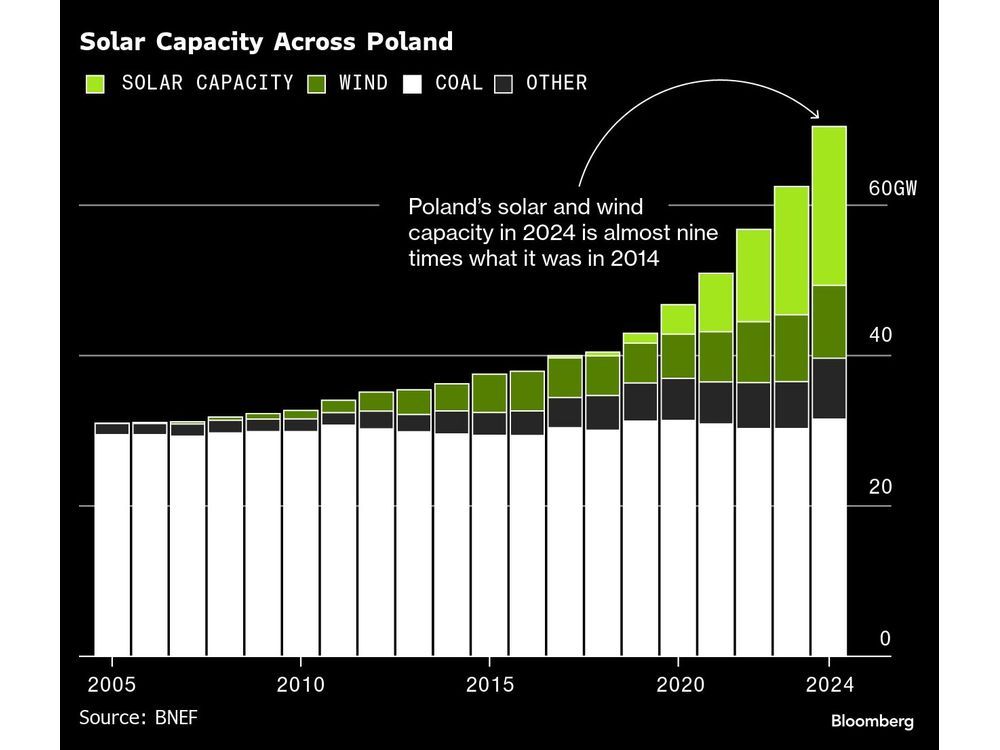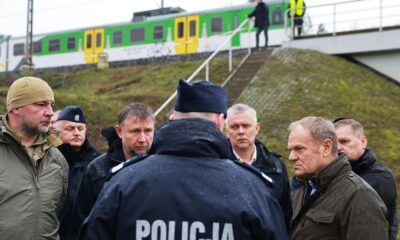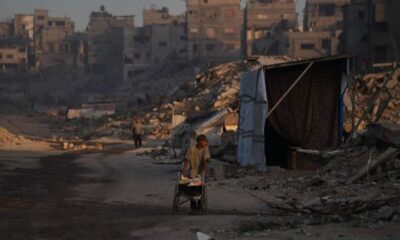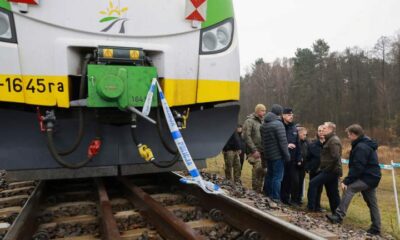Top Stories
Europe’s Arctic Cold Snap Challenges Thousands of New Heat Pumps

UPDATE: A severe Arctic cold snap is gripping Europe, putting thousands of new heat pumps to the ultimate test as temperatures in Warsaw are expected to plunge to -5C (23F) this week, nearly 4C below seasonal averages. Polish families who have recently transitioned from coal furnaces to solar panels and heat pumps are bracing for the impact of this unprecedented chill.
Residents like Jacek Owczarek, a 58-year-old from Lewkow, are navigating this critical moment. “I used to burn coal,” Owczarek stated. However, soaring prices for coal due to the Covid-19 pandemic and the ongoing fallout from Russia’s invasion of Ukraine prompted him to switch to solar energy, supplemented by natural gas. “Now, because I produce twice as much electricity as I use, I’m adding a heat pump to the system,” he added.
This cold snap comes at a pivotal time for Poland, which remains one of Europe’s most coal-dependent nations. Despite this, a remarkable shift towards renewable energy solutions is taking place. According to BloombergNEF, solar and wind capacity in Poland has surged nearly nine-fold over the past decade, with renewables accounting for over 40% of the country’s power supply in 2024.
The urgency of the situation is underscored by the upcoming COP30 climate summit in Belém, Brazil, where nearly 200 nations will discuss strategies to meet ambitious global climate goals, including a target to triple renewable energy capacity by 2030. “Tripling global renewable capacity is crucial to limit global warming to 1.5C,” stated climate experts.
Poland’s government is taking significant steps to support this transition, including a massive 100 billion zloty ($27 billion) “clean air” program aimed at upgrading the country’s aging housing stock, largely built during the Soviet era. Homeowners have installed over 13 gigawatts of photovoltaic panels in the past seven years, significantly reducing electricity bills.
The invasion of Ukraine in February 2022 marked a turning point for energy consumption in Poland, leading to a ban on coal imports and skyrocketing prices for the fuel. This shift has driven a record increase in electricity-powered heat pump sales. However, despite the initial surge, the demand for these systems has not sustained its peak; as of 2024, Poland had approximately 745,000 installed heat pumps, a fraction compared to 6.6 million in France.
While demand is picking up again, experts warn that Poland is falling short of its climate targets. The Polish Organization of Heat Pump Development reports that the current pace of heat pump installations will not meet the government’s goal of eliminating most coal-burning furnaces by the mid-2030s.
Pawel Lachman, head of the organization, urges the government to improve subsidies and adjust electricity tariffs to make heat pumps more accessible. “The speed at which Poland has transformed is absolutely astonishing,” said Michal Kurtyka, a former Polish climate minister. “But we need patience, which is complicated given the targets we have set.”
As this Arctic cold wave tests the resilience of Poland’s energy transition, the focus remains on whether the country can successfully navigate the challenges ahead while continuing its shift towards cleaner energy solutions. The outcome of this week’s weather could have lasting implications for energy policy and consumer choices in Poland and beyond.
Stay tuned for more updates as this story develops.
-

 Politics2 weeks ago
Politics2 weeks agoSecwepemc First Nation Seeks Aboriginal Title Over Kamloops Area
-

 World4 months ago
World4 months agoScientists Unearth Ancient Antarctic Ice to Unlock Climate Secrets
-

 Entertainment4 months ago
Entertainment4 months agoTrump and McCormick to Announce $70 Billion Energy Investments
-

 Lifestyle4 months ago
Lifestyle4 months agoTransLink Launches Food Truck Program to Boost Revenue in Vancouver
-

 Science4 months ago
Science4 months agoFour Astronauts Return to Earth After International Space Station Mission
-

 Technology3 months ago
Technology3 months agoApple Notes Enhances Functionality with Markdown Support in macOS 26
-

 Top Stories1 month ago
Top Stories1 month agoUrgent Update: Fatal Crash on Highway 99 Claims Life of Pitt Meadows Man
-

 Sports4 months ago
Sports4 months agoSearch Underway for Missing Hunter Amid Hokkaido Bear Emergency
-

 Politics3 months ago
Politics3 months agoUkrainian Tennis Star Elina Svitolina Faces Death Threats Online
-

 Politics4 months ago
Politics4 months agoCarney Engages First Nations Leaders at Development Law Summit
-

 Technology4 months ago
Technology4 months agoFrosthaven Launches Early Access on July 31, 2025
-

 Lifestyle2 months ago
Lifestyle2 months agoManitoba’s Burger Champion Shines Again Amid Dining Innovations




















